Digital Poster
Neuroinflammation
ISMRM & ISMRT Annual Meeting & Exhibition • 10-15 May 2025 • Honolulu, Hawai'i

 |
Computer Number: 97
3595. A
novel multimodal MRI-based neurophenotype model can predict
intestinal disease progression in patients with Crohn’s disease
R. Zhang, X. Shen, H. Wang, Y. Ke, Y. Wang, L. Huang, J.
Lin, W. He, M. Wang, C. Zhao, Z. Li, G. Yang, S-T Feng, X.
Li
The First Affiliated Hospital, Sun Yat-Sen University, Guangzhou, China
Impact: We developed a novel multiparameter MRI-based
radiomics model to effectively illuminate brain changes and
accurately stratify CD patients by neurophenotypic risk,
which may also be applicable to other gastrointestinal
diseases, expanding its potential use in various medical
fields.
|
|
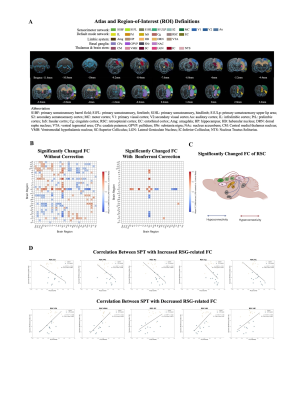 |
Computer Number: 98
3596. fMRI
Examination of the Spatiotemporal Alterations of Brain Networks
in Rodent Model of Acute Neuroinflammation
Q. Lyu, J. Wen, L. Xie, T. Ma, P. Cao, E. X. Wu, A. T. L.
Leong, Z. Zhang
The University of Hong Kong, Hong Kong SAR, China
Impact: This study examines the brain-wide functional
alterations in acute neuroinflammation rat models. The
observed changes in retrosplenial cortex-related brain
networks provide new insights into the mechanisms of
neuroinflammation-induced depressive symptoms and potential
therapeutic targets.
|
|
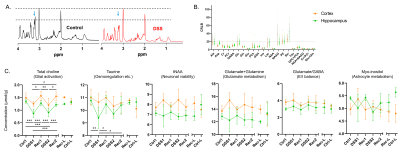 |
Computer Number: 99
3597. Disrupted
Metabolism in the brain of DSS-induced inflammatory bowel
disease model mice
R. Kono, M. Ono, K. Hirata, K. Ouchi, T. Tsurugizawa, Y.
Mikami, Y. Takado
National Institutes for Quantum Science and Technology, Chiba, Japan
Impact: This study provides insights into brain
metabolic disruptions associated with acute and chronic IBD,
linking neuroinflammatory changes to potential
neuropsychiatric symptoms. Future multifaceted analyses
could elucidate brain alterations in IBD, enhancing
understanding of the brain-gut axis and therapeutic
approaches.
|
|
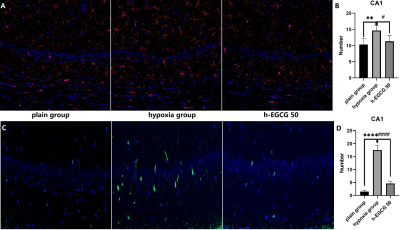 |
Computer Number: 100
3598. The
studies of epigallocatechin-3-gallate in improving brain
injury induced by chronic high-altitude natural environment by
7.0T MRI.
C. Chen, M. Wang
Henan Provincial People's Hospital, Zhengzhou, China
Impact:
The effects of EGCG in reducing EPO and metal chelating property about iron were dose-dependent, with effects of EGCG being similar to those of salidroside. QSM provides a potential complementary imaging technique to detect the effect of treating HA diseases. |
|
|
Computer Number:
3599. WITHDRAWN |
||
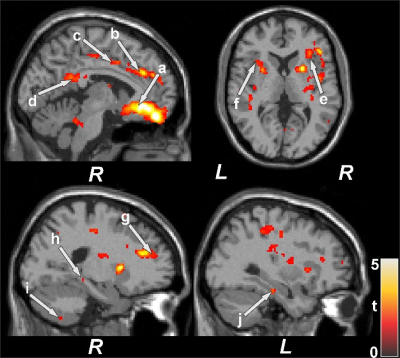 |
Computer Number: 101
3600. Increased
Regional Brain Temperatures in Obstructive Sleep Apnea Adults
B. Roy, L. Ehlert, R. Aysola, D. Kang, S. Sheriff, A.
Maudsley, R. Kumar
University of California Los Angeles, Los Angeles, United States
Impact: We observed increased regional brain temperature
in OSA adults, which have never been studied before, and
have implication in identifying interventions and improving
the morbidity, mortality, and quality of life in the
condition.
|
|
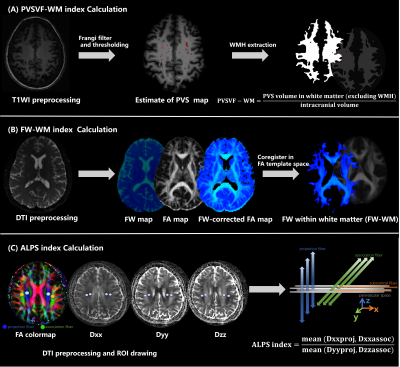 |
Computer Number: 102
3601. Alterations
in MRI indices of Glymphatic System in Systemic Lupus
Erythematosus: A Focus on Networks of Perivascular Spaces
J. Wang, K. Zhuang, J. Mo, H. Lin, X. Tan
Department of Medical Imaging Center, Nanfang Hospital, Southern Medical University, Guangzhou, China
Impact: Our study revealed impairments in Glymphatic
System of SLE patients, providing a noninvasive MRI
biomarkers for comprehensively quantifying Glymphatic
activity in SLE patients. Furthermore, the correlations
among the components of Glymphatic System may explain the
relationships among its structural compartments.
|
|
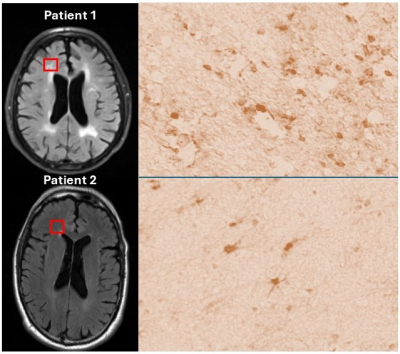 |
Computer Number: 103
3602. Assessment
of a novel neuroinflammation radiotracer in cerebral small
vessel disease
B. Wang, H. Jiang, Y. Chen, Y. Wang, I. Orukari, J-M Lee, A.
Ford, Z. Tu, T. Benzinger, H. An
Washington University School of Medicine, St. Louis, United States
Impact: Suggests a potential link between S1PR1
expression and neuroinflammation processes in cSVD and
highlights the association with WMH burden. Provides
preliminary evidence to support a new PET radiotracer
targeting S1PR1 as an imaging biomarker to investigate
neuroinflammation in cSVD
|
|
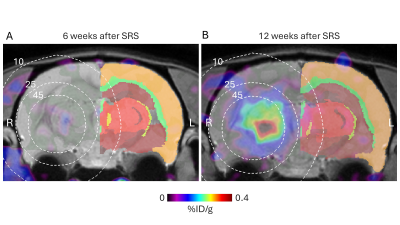 |
Computer Number: 104
3603. Molecular
imaging of radiotherapy-induced cerebrovascular inflammation and
neuroinflammation in a rat model of stereotactic radiosurgery.
E. Molokova, R. Lebel, F. Raccah, A. Bourissai, D. Sikpa, P.
Ignatius, G. Richard, L. Tremblay, S. Phoenix, B. Guérin, M.
Lepage
Université de Sherbrooke, Sherbrooke, Canada
Impact: It is the first study to demonstrate by in vivo
imaging the progression of neuroinflammatory and
cerebrovascular alterations in the rat model of SRS which
helps to understand the time and dose-dependent manner of
development of adverse radiation effects.
|
|
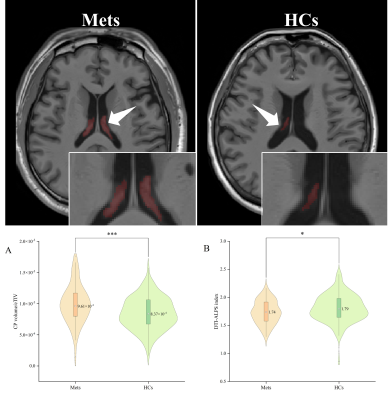 |
Computer Number: 105
3604. The
choroid plexus volume’s mediating effect on metabolic syndrome
and cognitive performance: a prospective cohort study
X. Huo, J. Xin, M. Li, C. Liang, X. Zhang, N. Wang, Y. Wang,
Z. Cheng, Y. Chen, P. Liang, B. Chen, F. Zhang, L. Guo
Department of Radiology, Shandong Provincial Hospital Affiliated to Shandong First Medical University, Jinan, Shandong, China. 324 Jing-wu Road, Jinan, Shandong, 250021, China., Jinan, China
Impact: The elevated choroid plexus volume in Mets may
be a neuroimaging indicator associated with cognitive
impairment. Mets risk factors significantly affect the
choroid plexus volume, and these volume
changes are negatively correlated with cognitive
performance.
|
|
 |
Computer Number: 106
3605. Plasma
proteomics to profile neurobiological mechanisms of chronic pain
Z-Y Li, W. Zhang, Q. Ma, W. Cheng
Institute of Science and Technology for Brain-Inspired Intelligence, Fudan University, Shanghai, China
Impact: This study delineates proteins associated with
various chronic pain conditions, elucidating their
implications across neurobiological pathways. Furthermore,
we identified proteins that were capable of predicting the
occurrence and spreading of chronic pain. These findings
benefit both research and clinical practice.
|
|
 |
Computer Number: 107
3606. MRI
measurement of Blood-Brain Barrier Permeability in ME/CFS with
and without PASC
S. Liu, S. Wang, D. Jiang, H. Lu, B. Natelson, X. Xu
Livingston High School, Livingston , United States
Impact: In this pilot study, we found increased BBB
permeability in the non-PASC ME/CFS group compared to the
PASC ME/CFS and control groups, providing preliminary
imaging evidence of neuroinflammation in ME/CFS. This
finding can deepen our understanding of ME/CFS
pathophysiology.
|
|
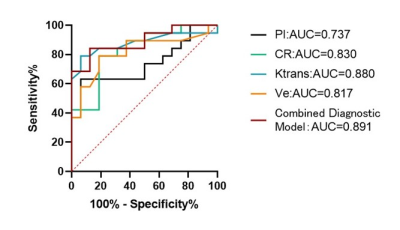 |
Computer Number: 108
3607. The
clinical application value of combined DCE-MRI quantitative
parameters and CE-T2 FLAIR in herpes simplex virus encephalitis.
N. Tan, R. Xu, X. Wang
Guizhou Provincial People's Hospita, Guizhou Province, China
Impact: This study indirectly and directly assessed BBB
permeability using quantitative parameters from CE-FLAIR and
DCE-MRI sequences to evaluate disease severity in HSE
patients, providing important clinical insights for early
intervention and treatment.
|
|
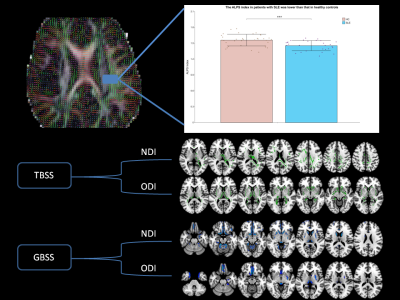 |
Computer Number: 109
3608. Cerebral
lymphatic dysfunction and disruption of gray and white matter
microstructural integrity in patients with systemic lupus
erythematosus
Y. Zhuang, M. Xu, T. Liu
The Affiliated Children's Hospital of Jiangnan University, Wuxi, China
Impact: Research can better understand the pathogenesis
of SLE patients and find therapeutic targets by discovering
the microstructural changes in SLE patients before the onset
of neurological disorders.
|
|
 |
Computer Number: 110
3609. The
Vicious Cycle of Glymphatic Dysfunction, Chronic Inflammation,
and Neurodegenerative Disorders
Q. Wen, L. Mao, J. Hu, Q. Jiang
Department of Radiology and Imaging Sciences, Indiana University School of Medicine, Indianapolis, IN, USA, Indianapolis, United States
Impact: It highlights how chronic inflammation
facilitates the interplay between glymphatic dysfunction and
neurodegenerative diseases. Disrupting this cycle could
provide new therapeutic avenues for treating
neurodegenerative conditions.
|
|
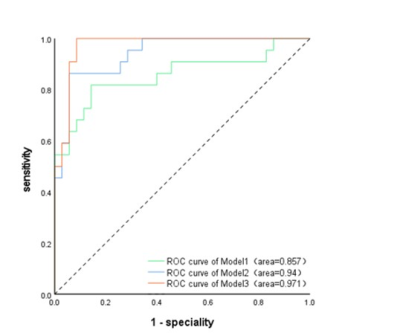 |
Computer Number: 111
3610. Automatic
whole-brain segmentation analysis for diagnosing
Sepsis-Associated Encephalopathy
D. Liu, W. Liu
Tongji Hosptial, Tongji Medical College, Huazhong University of Science and Technology, Wuhan, China
Impact: Whole brain segmentation using FreeSurfer,
combined with artificial intelligence, offers a promising
non-invasive method for diagnosing SAE. This approach could
facilitate earlier detection and intervention, ultimately
improving patient outcomes.
|
The International Society for Magnetic Resonance in Medicine is accredited by the Accreditation Council for Continuing Medical Education to provide continuing medical education for physicians.